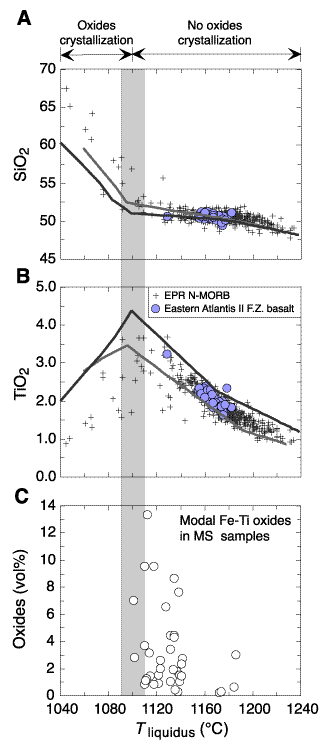Figure F4. Plots of (A) SiO2 and (B) TiO2 of MORB samples and model liquid lines of descent as a function of liquidus temperature to show that Ti and Fe (not shown) enrichment, thus the derivation of high Fe-Ti basalt liquid, is a natural consequence of tholeiitic magma evolution. This Fe-Ti enrichment reaches a maximum at temperatures of ~1100°C (depending on fO2 of the system), where Fe-Ti oxides begin to appear on the liquidus. Crystallization of Fe-Ti oxides (ilmenite and titanomagnetite) results in SiO2 enrichment in the residual liquids, which we interpret to be the origin of felsic veins/veinlets in Hole 735B. The liquid lines of descent are derived from model parental melts in Figure F3, for F = 10% (dark line) and F = 15% (light line), respectively, using the algorithms of Danyushevsky (1998). Plotted in (C) are modal (vol%) oxides in MS samples against liquidus temperatures (calculated from olivine as in Fig. F2) of parental liquids that produced olivine, clinopyroxene, and plagioclase in these rocks. Obviously, the melts parental to the mineral assemblages of most gabbros and olivine gabbros were too hot to produce the Fe-Ti oxides in these rocks. Therefore, these oxides must have been "added" to these rocks subsequently at lower temperatures. References for East Pacific Rise (EPR) and Atlantis II Fracture Zone (AII F.Z.) mid-ocean-ridge basalts (MORB) are given in Figure F2.

![]()